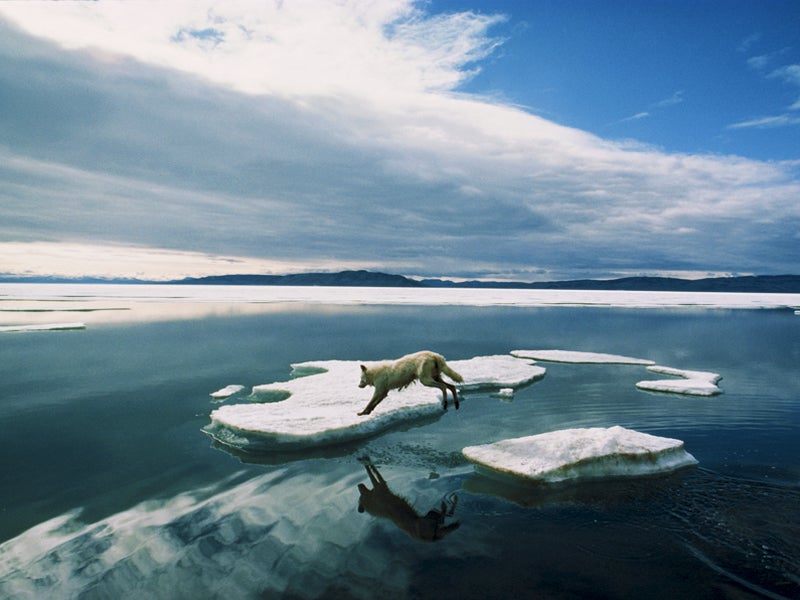Silencing The Wolf
Gray wolf 832F of the Lamar Canyon pack was killed by a hunter.

This page was published 13 years ago. Find the latest on Earthjustice’s work.
She never had a real name. Scientists called her 832F. To her fans, she was known simply as ’06 after the year that she was born. But for anyone who had ever seen the large, sleek gray wolf roaming the Yellowstone plains, she was the epitome of all things free and wild.
Last week, ’06 was killed by an unknown hunter just outside of the park. She was still wearing her radio collar.
The death of ’06 is a stark reminder of the culture war in the Northern Rockies between those who recognize the gray wolf’s right to exist and role in maintaining a balanced ecosystem, and those who view the creature as a threat to livestock and public safety that must be mercilessly exterminated.
For scientists and conservationists working to restore the gray wolf to the Northern Rockies after a century-long absence, the loss of ’06 was a huge blow. She was the alpha female of the Lamar Canyon pack—Yellowstone’s most famous wolf pack. Visitors described how the strong and agile she-wolf was able to singlehandedly take down large elk to feed her litter. One observer recalled watching ’06 outsmart 16 invading wolves from a rival pack, luring them away from a den of vulnerable pups. The Lamar Canyon pack now faces the real possibility of disbanding if another leader does not fill the void.
While a bullet killed ’06, politics and misguided fears pulled the trigger. Long demonized by cattle and sheep ranchers, wolves account for less than 1 percent of all livestock mortality in the United States—behind domestic dogs, digestive problems, respiratory disease and weather. Yet, despite this data, the Fish and Wildlife Service bowed to political pressure and relinquished wolf management to the state of Wyoming. Wyoming cleared the way for wholesale slaughter of its gray wolf population throughout most of the state—with Yellowstone National Park being one of the few safe havens for the beleaguered species.
But like all animals, wolves do not abide by lines on a map. Even those that spend the vast majority of their time inside Yellowstone are fair game to licensed hunters the moment they step out of the park’s borders—as ’06 did. Her unnecessary death has sparked outrage among scientists, conservationists and park visitors, and state officials in neighboring Montana have responded by banning the hunting of collared wolves in areas bordering the park. Wyoming has not indicated it will follow suit.
The only way to prevent a repeat of the slaughter that claimed the lives of ’06 and 265 other wolves this year is to return wolf management to the Fish and Wildlife Service. And that is exactly what Earthjustice attorneys and our clients are attempting to do right now in court. We are suing the federal government for its decision to hand the reins over to Wyoming—a state that has clearly shown it has no intention of adequately protecting its population of wolves. But the legal battle will be fierce and we are counting on the public’s support to keep this fight alive. You can take a stand for the wolves by making a small emergency donation right now—any amount is appreciated.
She may have died without a real name, but ’06 did not die without a purpose. If any good can come out of this tragedy, it would be a clear recognition that gray wolves are an intrinsic part of the Northern Rockies ecosystem. Their presence is critical to maintaining the natural balance between predator and prey—and to sustaining our notion of what it truly means to be free and wild.